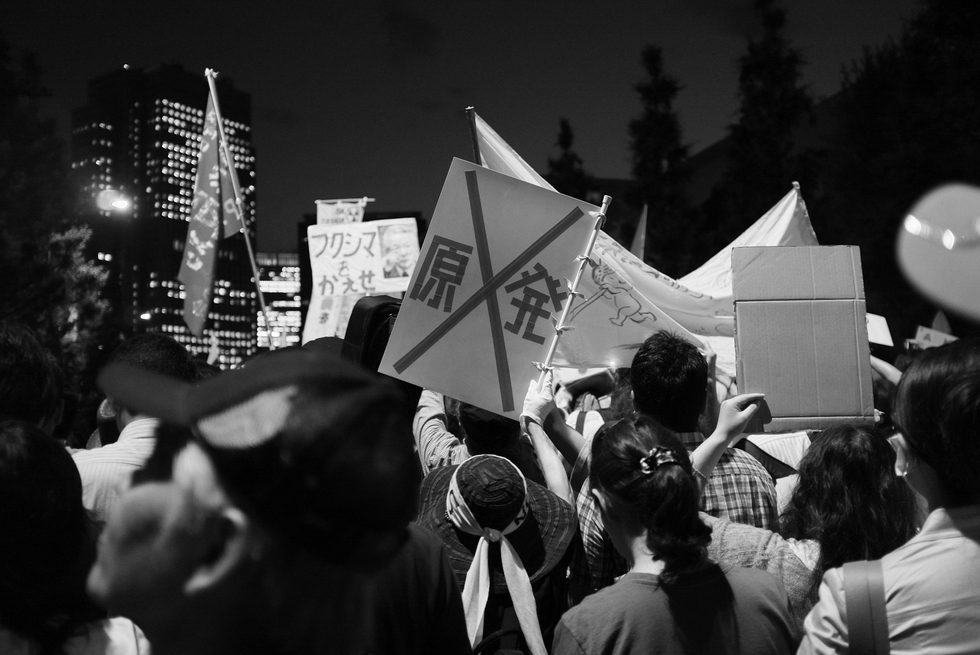3.11 Politics in Disaster Japan, Ten Years Later: Introduction
From the Series: 3.11 Politics in Disaster Japan: Ten Years Later
From the Series: 3.11 Politics in Disaster Japan: Ten Years Later

On March 11, 2011, the largest recorded earthquake in Japan’s history rocked the country. Within minutes, a tsunami that reached thirty meters in places was heading toward the northeast coast into Tohoku. Boats, buildings, and whole towns were wiped out in a matter of minutes. More than 23,000 people have been reported dead or missing, and as many as 40,000 are displaced, living in shelters or temporary housing. Among the effects is the destabilization of nuclear reactors. Since March, the danger zones have progressively expanded to as far away from the reactor as twenty-five miles, and although new areas are being added even today, many claim that the Japanese government is underestimating the danger. Today, it is unclear if and when broad segments of Tohoku will ever be safe.
—3.11 Politics in Disaster Japan, Hot Spots series, July 2011
Of these events, we wrote—three months after their occurrence—that they had already given “rise to a critique from a citizenry that is often thought of as passive, if not always content.” In a country where too much had been egregiously yielded to and grotesquely protected by the engines of nationalist capitalism, something new seemed inspired by the tremors of 3.11. Voices of dissent arising from diverse segments of the population, speaking to a common cause revealed by the disaster. And bodies willing to protest or volunteer to help clean up the mud of those so deeply mired in it, of homes/lives now destroyed in Tohoku. “Hang in there,” Japanese urged one another. “Gambarro Nippon”—a politics of a kind, until it became depoliticized over time. Which, on both ends, could well have been expected.
What we did not anticipate, however, was the scope of political engagement, how widely and diversely it was sustained, and how it proliferated in different directions. In terms of demonstrations alone, in the ten years since the triple disasters, more have taken place than ever before in Japanese history. This includes the spectacle of the largest street demonstrations at any time since the end of the 1970’s AMPO period in the heart of Tokyo, organized by students—and joined by many of us writing here. Becoming innovative in both practice and form, they brought together environmental and anti-nuke activists, and also spawned an anti-fascist movement that used many of the same techniques to call into question the responsibility of Prime Minister Abe’s handing of the disaster. This also led to protests challenging the State Secrets Act as well as amendments to Article 9 of the constitution. At least for a time, political engagement enjoyed a level of social acceptance and even cache as those involved tried to push the country beyond the darker ghosts of AMPO’s past.
We have also seen local, even intimate, politics of grassroots groups, such as housewives who have converted their ocha-kai into potent instruments of self-support seeking to protect kids (theirs and everyone else’s) from the schools serving untested lunches. There have been farmers crowdsourcing radiation measurements because they did not trust government inspectors. They taught themselves the difference between millisieverts and becquerels, and about the venal duplicity of Chernobyl to both protect themselves and to hold their own (equally venal) government accountable. Acts of self-preservation but also of defiance. Jiko-sekinin (self-responsibility) living up to its political potential.
But just as political engagement was everywhere, no one wanted to be labeled “political.” Instead, the desire was to be considered just futsū (regular), as in “regular moms” (even as they protested with baby carriages in front of the Prime Minister’s residence), “regular farmers” (even as they formed new agricultural cooperatives), and “regular college students” (even as they carried signs saying “Fuck Abe”). So contaminated is the “political,” that disavowal of the label becomes a precondition for activist engagement.
Today, ten years later, we see mixed results. Mostly, we see exhaustion, especially of those in the affected areas of Tohoku. (Maybe this is how most politics die—of fatigue.) One woman in Koriyama City explained that “you cannot keep living like that, in fear. You just have to let go, even when you do not trust, in order to survive.” Anger fades and fear is buried. Farmers return to making crops, housewives to tending children. In the once active urban centers, memory has faded as well and the issues that were once pressing have now receded. Most college students are back to wanting to get jobs in the tatters of corporate Japan. Neither the State Secrets Act (which passed with barely a ripple) nor the attacks on Article 9 (repelled for now) are in the news or our consciousness these days.
Which is not to say that there are no signs of possibility and hope—as we saw alongside the anger and fear so palpable ten years ago when writing the first Hot Spots series. As we catch up with our activist friends on this ten-year anniversary, we find that many have entered local government or joined the parent-teacher association—working within a system that they still do not fully trust, “but what else to do?” Young activists have become active in issues involving both race (BLM Japan) and gender politics (#wetoo) as well.
The times are uncertain and strange; slivers of hope, a politics demanding change in its own form as well, and life to be survived. What does it say that even in early March this year, there was less media coverage of “3.11” than of COVID-19? Another disaster . . .